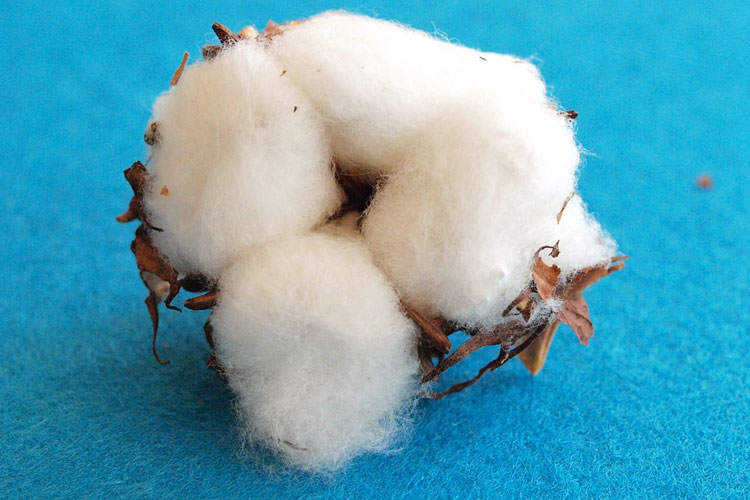Cotton and Wool dust is often present in the air during Cotton and Wool handling and processing. Cotton dust may contain many substances including ground-up plant matter, fiber, bacteria, fungi, soil, pesticides, non-cotton matter, and other contaminants that may have accumulated during growing, harvesting, and subsequent processing or storage periods.
Byssinosis, also called "brown lung disease" or "Monday fever", is an occupational lung disease caused by exposure to cotton dust in inadequately ventilated working environments.
Exposure to cotton dust has long been associated with the chronic respiratory disease byssinosis. The incidence of the disease is related to the number of years a person is exposed to the dust and the concentrations of airborne dust to which they are exposed.
Byssinosis commonly occurs in workers who are employed in yarn and fabric manufacture industries. It is now thought that the cotton dust directly causes the disease and some believe that the causative agents are endotoxins that come from the cell walls of gram negative bacteria that grow on the cotton.
Textile process dusts, in particular wool and cotton, can also cause byssinosis, occupational asthma and respiratory irritation. Up-to-date COSHH assessments, control to within Workplace Exposure Limits (WELs) and simple health surveillance are priorities where dust is a hazard.
For the wool industries typically dusty operations include opening, blending, carding, and backwinding. For cotton, control measures are likely to be required for most early processes including raw material handling, opening, carding, drawing, combing, beaming, ring spinning, and high speed winding.
Cleaning should be done using something like a vacuum cleaner, not a broom or brush or compressed air.
Cotton and Wool Dust is Combustible and is an Explosion Hazard:
When most people think of controlling dust in the workplace, they think of taking steps to avoid inhaling dusts to prevent health problems. However, the accumulation of combustible dusts in the workplace can lead to far greater consequences. As seen in recent years, neglect of housekeeping and improper handling of combustible dusts can lead to property damage, injuries and loss of life.
Cotton and Wool dust facilities are inherently prone to fires and explosions mainly due to the accumulation of dust. Preventing and controlling the accumulation of dust through good housekeeping is a key means of controlling fire and explosion hazards.
The National Fire Protection Association (NFPA) defines a combustible dust
as “a combustible particulate solid that presents a fire or deflagration hazard when suspended in air or some other oxidizing medium over a range of concentrations, regardless of particle size or shape.”
In general, combustible particulates having an effective diameter of 420 μm or smaller, as determined by passing through a U.S. No. 40 Standard Sieve, are generally considered to be combustible dusts. However, agglomerates of combustible materials that have lengths that are large compared to their diameter (and will not usually pass through a 420 μm sieve) can still pose a deflagration hazard. Therefore, any particle that has a surface area to volume ratio greater than that of a 420 μm diameter sphere should also be considered a combustible dust.
The vast majority of natural and synthetic organic materials, as well as some metals, can form combustible dust. The NFPA’s Industrial Fire Hazards Handbook states, “any industrial process that reduces a combustible material and some normally non-combustible materials to a finely divided state presents a potential for a serious fire or explosion.”
Suggested Industrial Vacuums for Recovery of Toxic & Combustible Dust
PrestiVac HEPAPlus* Vacuums are specifically designed to safely vacuum toxic dusts. Equipped with a Certified Absolute HEPAPlus*filter with an efficiency of 99.995% on 0.2 micron so there is no risk of exposure or contamination for the operator or the environment. These vacuums are tested for absolute filtration. Testing Method: IEST RP-CC034.3. H14. MIL-STD 282 / A.S.T.M. - D2986-91. MPPS method EN 1822.
PrestiVac Explosion Proof/Dust Ignition Protected Vacuums are designed to safely vacuum explosive, flammable, combustible conductive* dusts. Our Explosion Proof/Dust Ignition Protected Vacuums are completely grounded and static dissipating because they are built entirely with non-sparking metals and do not have any painted components so there is no risk of fire or explosion from a spark or static build up. All the electrical components, including the motor and starter are totally enclosed so there is no source of ignition. Our explosion proof vacuum cleaners comply with NFPA 484 guidelines and are an effective tool for good housekeeping practise as per OSHA.
Which Industries are at Risk with Cotton and Wool Dust?













